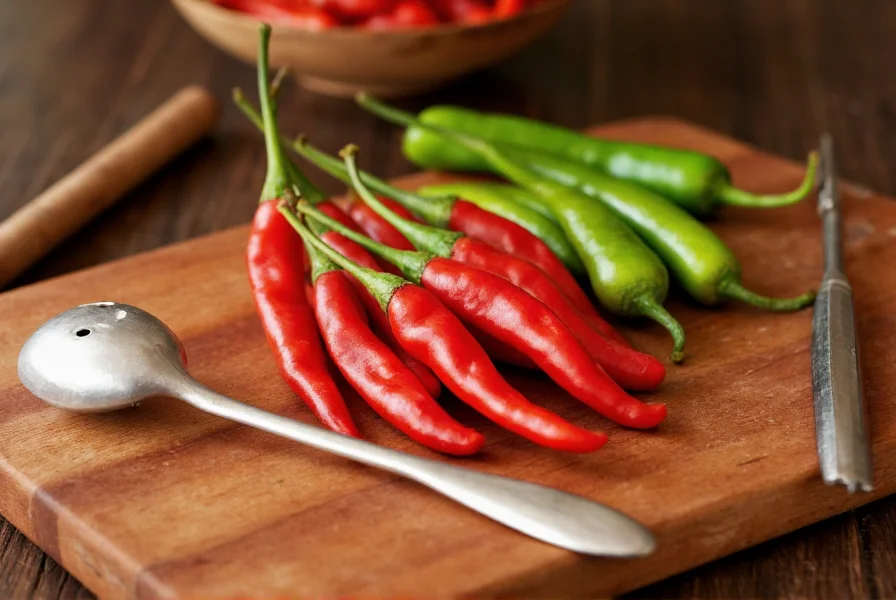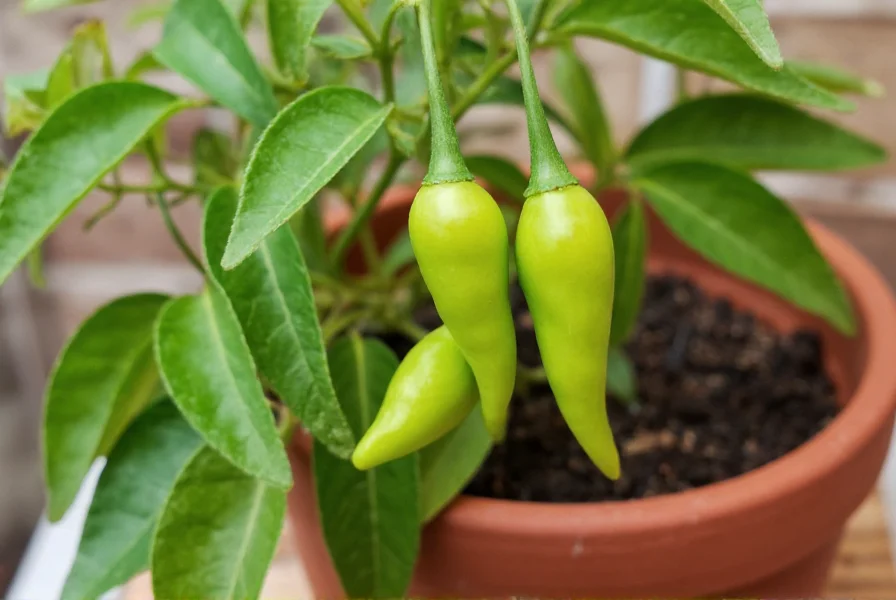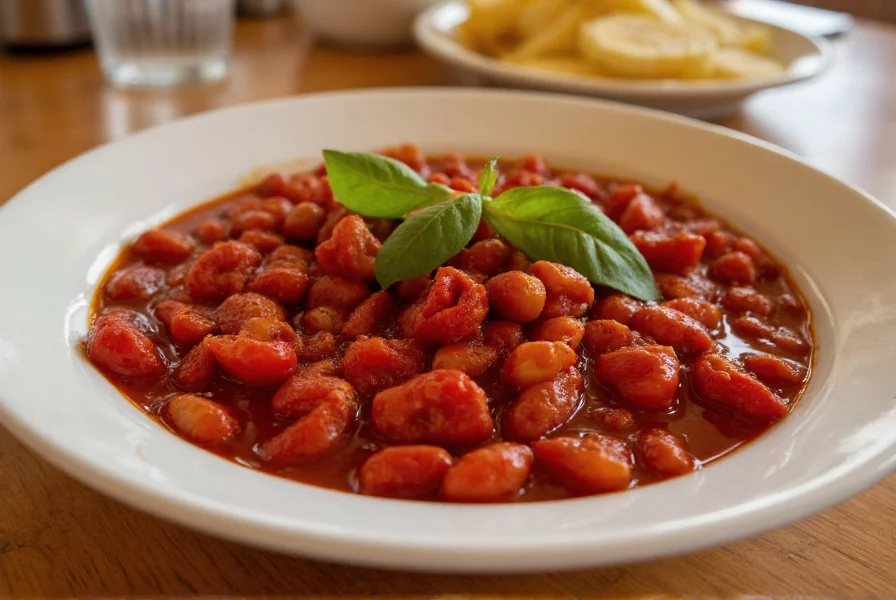Bird's eye chili (Capsicum annuum var. bird's eye) has become a staple ingredient across global kitchens, yet many home cooks remain uncertain about its proper usage and characteristics. Understanding this fiery pepper's properties helps elevate your culinary creations while avoiding common mistakes that can ruin dishes.
Origin and Global Journey
Despite common misconceptions, bird's eye chili did not originate in Thailand. Historical evidence suggests these peppers likely traveled from the Americas to Asia via Portuguese traders in the 16th century. The name "bird's eye" comes from their small size and shape, which resembles what birds might consume and disperse through their droppings—a natural propagation method for wild chili plants.

Physical Characteristics and Varieties
Bird's eye chilies typically measure 1-2 inches (2.5-5 cm) in length with a diameter of approximately 0.2-0.4 inches (0.5-1 cm). They grow upright on the plant rather than hanging down like many other chili varieties. While most commonly associated with their vibrant red mature color, these chilies also appear in:
| Color Stage | Flavor Profile | Common Usage |
|---|---|---|
| Green (immature) | Grassy, slightly bitter | Thai green curry, fresh salsas |
| Red (mature) | Fruity, complex heat | Sambal, dipping sauces, stir-fries |
| Yellow/Orange | Sweet, floral notes | Specialty dishes, decorative garnishes |
Heat Level and Scientific Measurement
When discussing bird's eye chili heat level, the Scoville scale provides objective measurement. These peppers register between 50,000-100,000 Scoville Heat Units (SHU), placing them significantly above jalapeños (2,500-8,000 SHU) but below habaneros (100,000-350,000 SHU). The heat primarily concentrates in the placental ribs and seeds, though the flesh contains noticeable capsaicin as well.
Understanding how hot is bird's eye chili compared to similar varieties helps prevent culinary disasters:
- Bird's eye chili vs Thai chili: These terms generally refer to the same pepper variety
- Bird's eye chili vs serrano: Bird's eye is 2-4 times hotter
- Bird's eye chili vs cayenne: Similar heat range but different flavor profiles
- Bird's eye chili vs habanero: Habanero is typically 2-3 times hotter
Culinary Applications Across Global Cuisines
The distinctive flavor profile of bird's eye chili—combining intense heat with subtle fruitiness—makes it indispensable in several culinary traditions. In Thai cooking, it features prominently in:
- Nam prik (chili dipping sauces)
- Tom yum soup
- Green and red curry pastes
- Pad krapow (holy basil stir-fry)
Vietnamese cuisine utilizes bird's eye chili in nuoc cham dipping sauce and various pho variations, while Indonesian cooking features it in sambal oelek and rendang spice blends. When working with bird's eye chili uses in cooking, remember that whole chilies provide milder heat distribution, while chopped or crushed chilies release maximum capsaicin.
Practical Substitution Guide
Finding authentic bird's eye chili substitutes requires understanding both heat level and flavor profile. The best alternatives depend on your specific recipe:
- Serrano peppers: Closest fresh alternative (use 2 serranos for 1 bird's eye)
- Fresno chilies: Milder option with similar appearance
- Red Thai chili powder: For dried applications
- Habanero (sparingly): For extreme heat with different flavor notes
- Cayenne pepper: 1/4 teaspoon cayenne equals approximately 1 fresh bird's eye
When seeking the perfect bird's eye chili substitute, consider whether your recipe requires fresh, dried, or powdered form, as this dramatically affects substitution ratios.
Growing Bird's Eye Chili Plants
Gardeners interested in growing bird's eye chili plants should note these varieties thrive in warm climates with full sun exposure. Start seeds indoors 8-10 weeks before last frost, maintaining soil temperature around 80-85°F (27-29°C) for optimal germination. These compact plants (typically 18-24 inches tall) work well in containers and produce abundant fruit when provided with consistent moisture and well-draining soil.

Safety and Handling Best Practices
Working with extremely hot chilies requires proper precautions. Always wear food-safe gloves when handling bird's eye chilies, and avoid touching your face—especially eyes—during preparation. If you experience burning sensations, dairy products (milk, yogurt) neutralize capsaicin more effectively than water. Never use hot water when washing hands after handling, as heat increases capsaicin absorption.
Storage Techniques for Maximum Freshness
Preserve your bird's eye chilies using these proven methods:
- Fresh storage: Keep unwashed in perforated plastic bag in vegetable drawer (2-3 weeks)
- Freezing: Freeze whole peppers in airtight container (6-12 months)
- Drying: Air-dry or use food dehydrator for homemade chili flakes
- Pickling: Preserve in vinegar solution for tangy culinary applications
Common Questions About Bird's Eye Chili
Are bird's eye chilies the same as Thai chilies?
Yes, bird's eye chilies are commonly referred to as Thai chilies in many regions. The terms generally describe the same small, pointed chili variety essential in Southeast Asian cooking, though regional variations in heat level and flavor may exist.
How many bird's eye chilies equal one jalapeño in heat?
Approximately 6-10 bird's eye chilies equal one jalapeño in heat intensity. Bird's eye chilies measure 50,000-100,000 Scoville units while jalapeños range from 2,500-8,000 units. Always adjust quantities based on your specific chilies' heat and personal tolerance.
Can you eat bird's eye chilies raw?
Yes, you can eat bird's eye chilies raw, but exercise caution due to their intense heat. In Southeast Asian cuisines, they're often served raw in small quantities as condiments or sliced into salads. Never consume multiple raw bird's eye chilies at once unless you have high heat tolerance.
Why are they called bird's eye chilies?
The name comes from their small size and shape, which resembles what birds might consume and disperse through their droppings. This natural propagation method helps wild chili plants spread their seeds. Despite the name, birds actually don't taste the capsaicin that makes these peppers hot to humans.
What's the best way to reduce bird's eye chili heat in a dish?
To reduce excessive heat from bird's eye chilies in a dish, add dairy products like yogurt or coconut milk, which contain casein that binds to capsaicin. Acidic ingredients like lime juice can also help balance heat perception. For future reference, remove seeds and white ribs before cooking, as these contain the highest concentration of capsaicin.











 浙公网安备
33010002000092号
浙公网安备
33010002000092号 浙B2-20120091-4
浙B2-20120091-4